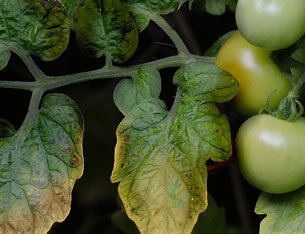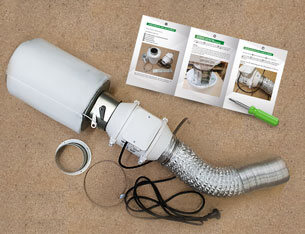Unfortunately, electricity costs cannot be ignored when growing indoors in a grow box. The grow lamps, exhaust air and ventilation are the biggest cost drivers. In the following, you will find out what a home grow with 400 watts costs approximately, and what the cost ratio is to an LED grow lamp.
Which consumers do we have?
- the grow light
- the tube fan of the exhaust air system
- other circulating air fans
- if necessary, heating or cooling of the grow room or the nutrient solution
How high is the electricity consumption?
The amount of electricity used for indoor growing depends primarily on the grow lamp used. Depending on which lighting is used and at what power level, you will also need a tube fan with more power for the exhaust system to bring the used, warm air outside. In the following examples, we show the power consumption of a typical grow on one square metre. We assume that one kilowatt hour of electricity costs 0.28 EUR and that a month has an average of 30.4 days.
Example of a grow with a sodium vapour lamp:
If we operate a sodium vapour lamp with 400 watts on an electronic ballast, we need 415 watts of power for 12 hours a day for this. This costs 42.26 euros per month. Because of the heat generated in a 2 cubic metre grow tent, we use a tube fan that has an output of 37 watts and runs 24 hours a day, generating electricity costs of 7.60 euros per month. In addition, there are one or two clip fans with a total of 30 watts running 24 hours a day, which generate costs of 6.08 euros per month. So our NDL-Grow costs us a total of 55.94 euros per month. This does not include the costs for heating or cooling the grow room or the nutrient solution.
Example LED Grow power consumption:
Here we use a Greenception GC-9 LED with 288 watts of power for 12 hours per day, which is roughly equivalent to a 400 W sodium vapour lamp and costs us 29.49 EUR per month Since an LED does not produce nearly as much heat as a sodium vapour lamp, we get by here with a smaller exhaust system and the tube fan only consumes 25 watts, this comes to 5.17 EUR per month. As before, let's assume there are 30 watts of other consumers such as clip fans or similar, which cost us 6.08 EUR per month. Our LED grow thus has electricity costs totalling 40.74 euros per month. So our LED-Grow costs 15.20 euros less per month than the NDL-Grow.
And the purchase costs?
In fact, an LED grow lamp costs considerably more than a sodium vapour lamp. With the latter, there are also some accessories. For example:
- Electronic ballast from Lumatek, 400W: 149.90 EUR.
- Philips SON-T Agro, NDL 400W: 48.90 EUR
- Reflector: Adjust-A-Wings Defender White, Medium: 69,90 EUR
Total cost: 253.30 EUR A Greenception GC-9 Grow-LED, on the other hand, costs 589.90 EUR. This makes it 336.60 EUR more expensive than the sodium lamp with accessories. Since the monthly electricity costs from our example are EUR 15.20 lower when using an LED, the LED has paid for itself after just over 22 months! From this point on, the higher costs of the purchase have been offset by the energy savings during operation, and from then on you can grow more cheaply than with a sodium vapour lamp.
How high are the electricity costs of different grow lamps?
The following table shows an overview of the approximate costs of operating different grow lamps, for example the electricity costs for a 600 W NDL or the electricity consumption of an LED grow.
| Input Power | Electricity costs per month* |
|
|---|---|---|
| NDL / MHL 250 W | Ballast 260 W | 26,45 € |
| NDL / MHL 400 W | Ballast 415 W | 42,26 € |
| NDL / MHL 600 W | Ballast 620 W | 63,23 € |
| CMH 315 W | Ballast 334 W | 34,05 € |
| LED 150 W | 150 W | 15,20 € |
| LED 215 W | 215 W | 21,89 € |
You can easily calculate your own consumption with the Grow electricity calculator.
Conclusion
In most cases there are also costs for heating or cooling the grow room, which we have not taken into account here, as it depends very much on the conditions on site. The heat generated by an NDL, for example, can also be an advantage if less heating is required. In general, however, LEDs save a lot of electricity, but because of their relatively high purchase price, they pay off more for those who will use them often and for a long time.
Note: All prices are as of 12.03.2019 and may change in the future.
.jpg)



